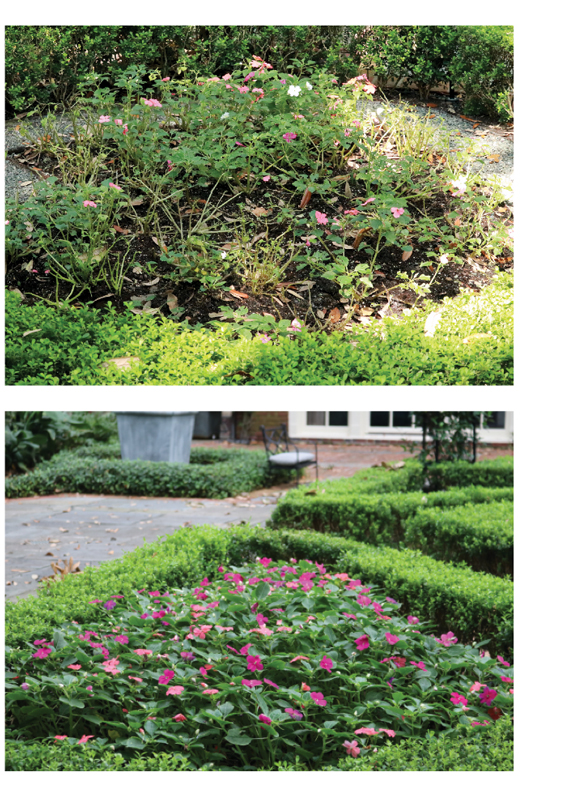11/1/2019
Beacon: Shade’s Revenge Plant
Lauren Kirchner

Do you ever feel like a detective? As plant people, most of us are charged with solving problems by hypothesizing plot twists and chasing a guessing game of environmental suspects. We often hear the struggled whine of “my plants are DYYY-ING!” to spur us into an interrogative investigation and, just maybe, we connect enough clues to end up a hero.
During one of the wettest springs in Houston, Texas, I was invited to visit the best kept gardens of estate homes with a landscaper friend of mine. The iconic neighborhood in the center of the city is filled with lushly layered lawn steps, thick humidity and lots and lots of hired help.
My friend lamented he’d been troubled with impatiens at many residences around town, but they’d been purchased through a distributor and he wasn’t confident in the name of the original series installed. Beds of impatiens were dropping like flies in the backyards of folks with rather dignified landscape budgets. Growing tired of repeated pocket replacements, he needed a new solution.
I flung my camera across my chest, threw a box of Ziplocs in my kids’ car seats and drove into the city like a detective with a hot lead on a dramatic crime scene. My hunch: A horrifying mess of fallen foliage with a white-spored repeat offender holding the smoking gun.
Stealthily peeking behind the well-trimmed hedges of the wealthy, what did we find? Flower beds with no flowers, defoliated stems and a hot ’n bothered missus. Surprise! Even rich people get downy mildew, y’all.
Erin Brockovich-style, I dove my hands into those lifeless and leafless flower beds and gathered sample collections—carefully labeling each bag with the city’s most prominent last names while security lurked somewhere watching, wondering what in the hell a girl in hot pink sunglasses was doing bagging up dead plants.
Pictured above, top: In June, “traditional” impatiens in the garden of a well-to-do, Houston-area client were dying a slow death from IDM.
Above, bottom: In July, the traditional impatiens were ripped out and replaced by Beacon Impatiens, which thrived even in soil previously infested with IDM-riddled plants.
Off went the samples to the Ball Seed lab in West Chicago, Illinois for analysis to confirm suspicion of the perpetrator. Cause of death: The common Impatiens Downy Mildew strain affecting most of the nation. Sneaking through iron gates, making hits and leaving behind champagne bubbles of white spores as its trail, this one would require some serious garden therapy.
Time for what I like to call revenge plants. You know, the ones that reaffirm a landscape and radiantly deflect taunting threats. They flourish beyond expectation and scoff at pesky crooks. Revenge plants take back what was theirs and look damn good doing it.
To resuscitate the mysterious hits around town and prove the new claims of heroism, Beacon needed to shine its light.
Brand new flats of untreated Beacon Impatiens were installed four days later. The exact same beds were left 100% untreated for fungal prevention. Free of any new amendments to hold all variables constant, they were left totally as-is.
Several rainstorms and a few squirrel visits later, we have Exhibit B (for Beacon, obviously). Six weeks after install, they’re thriving, and the missus of the estate thinks so, too. Her favorite plants are alive and brunch can be enjoyed from the back window once again. We solved a spring-long cold case, got revenge on the white spores of downy mildew and lived to tell the story of Beacon.
This case was closed in partnership with Johnny Steele Design, Spring Creek Growers and Ball Seed Company. GT
Lauren Kirchner is Director of Sales and Marketing at Spring Creek Growers in Waller, Texas.